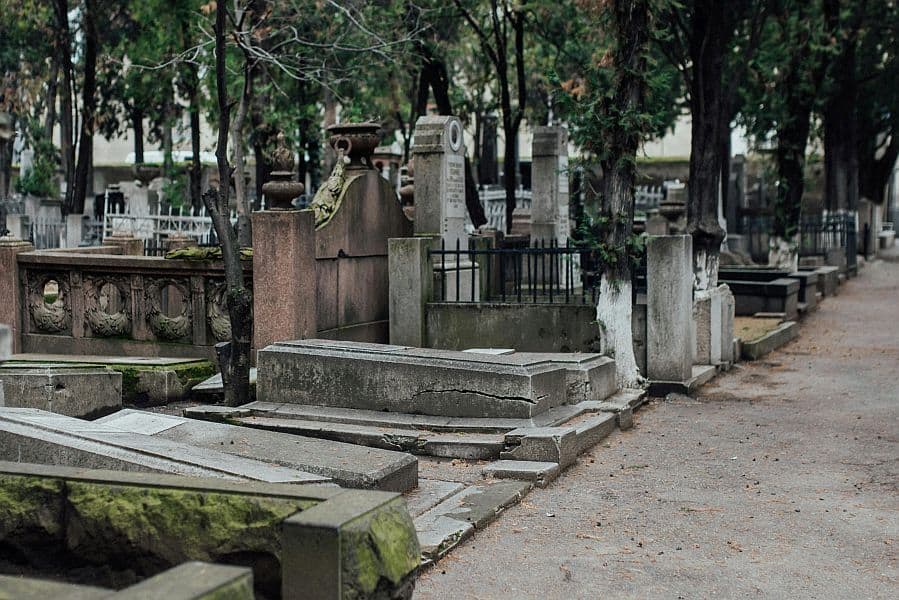The Importance of Headstone Preservation: How to Protect Your Family’s Legacy
Headstones do more than mark a final resting place—they’re lasting symbols of our family’s heritage, telling the stories of our ancestors. Over time, these important markers can deteriorate due to exposure to the elements, pollution, or biological growth, but preserving them helps safeguard family history for future generations. Whether you’re a family historian or simply want to maintain a connection to your roots, headstone preservation is an important and meaningful effort.
Why Preserving Headstones Matters
 1. Honoring Your Ancestors
1. Honoring Your Ancestors
Preserving headstones is one way to honor the memory of your loved ones. These markers are often inscribed with meaningful details about a person’s life, like their name, dates, and even personal messages. By taking care of these stones, you help preserve the stories and legacies they hold.
2. Preserving History
Older headstones often serve as historical records, capturing details about past communities, customs, and events. In taking care of these markers, you’re also preserving a piece of local and national history that can offer valuable insights for historians and genealogists alike.
3. Helping Genealogy Research
For those researching their family tree, headstones can provide critical information that might not exist in other records. By preserving headstones, you help future family members access important clues about their ancestors’ lives, which can play a significant role in their own family history research.
4. Preventing Further Deterioration
Once a headstone starts to show signs of damage, such as cracks or wear, it can quickly become worse if not cared for. Taking steps to preserve the headstone early can prevent more significant damage down the road and keep it in good condition for future generations.
Tips for Cleaning and Maintaining Old Headstones
Cleaning and maintaining older headstones requires special care. Many are made from softer materials, like limestone or marble, which can be easily damaged if handled improperly. Here are some helpful tips to ensure the preservation process goes smoothly:
1. Evaluate the Condition
Before you start cleaning, inspect the headstone for any signs of damage, such as cracks, chips, or instability. If you notice significant damage, it’s best to contact a professional who can handle fragile stones. Attempting to clean a damaged stone without proper knowledge can make the problem worse.
2. Use Gentle Tools
When cleaning, always use soft, non-abrasive tools like:
– Nylon or natural bristle brushes (nothing too hard)
– Sponges or cotton cloths
– Wooden or plastic tools for scraping away dirt
Avoid harsh chemicals, including bleach or acidic solutions, as they can cause permanent damage. Opt for biodegradable cleaners designed specifically for stone preservation, such as Hardscape BSC, or stick with plain water.
3. Start Cleaning from the Bottom
Begin cleaning the headstone from the bottom and work your way up. This helps prevent streaks, as dirt or water running down will cover areas yet to be cleaned, keeping everything even as you go.
4. Carefully Remove Moss and Lichen
Moss, algae, and lichen can build up on older headstones, particularly in damp areas. While they might seem harmless, these organisms trap moisture and can lead to further deterioration. Gently scrub them away using a soft brush, and consider applying a biological cleaning agent that can prevent regrowth.
5. Rinse Thoroughly
Once you’ve finished cleaning, rinse the headstone with clean water to ensure no cleaner residue is left behind. Even mild cleaners can cause issues over time if they aren’t completely removed.
6. Avoid Power Washing
While it might seem like a quick solution, power washing should be avoided as it can erode and damage softer stones like marble or sandstone. Stick to hand cleaning for the safest results.
7. Document Your Preservation Efforts
After you’ve cleaned the headstone, take photos to document your work. This helps track the stone’s condition over time and provides a record of your efforts. Sharing these with family members or genealogy groups can also inspire others to get involved in preserving their own family history.
Long-Term Preservation Tips
Preservation doesn’t end with cleaning. Here are a few additional steps to help ensure headstones last for generations:
– Limit direct contact: Ask visitors to avoid touching the stone, as oils from hands can speed up deterioration.
– Maintain the surroundings: Make sure there’s no overgrown vegetation, like trees or roots, that might cause damage to the headstone over time.
– Call professionals for serious damage: If a headstone is badly damaged, professional help may be necessary to stabilize or repair it.
Preserving headstones is about much more than keeping a stone in good condition. It’s about maintaining the stories and connections that bind us to our family’s past. By taking the time to care for these important markers, you’re helping to protect the legacy of your ancestors and ensuring that future generations can connect with their history.
Whether you’re passionate about genealogy or simply want to care for a loved one’s grave, your efforts to preserve headstones are a meaningful way to keep family history alive.

Leave a Reply